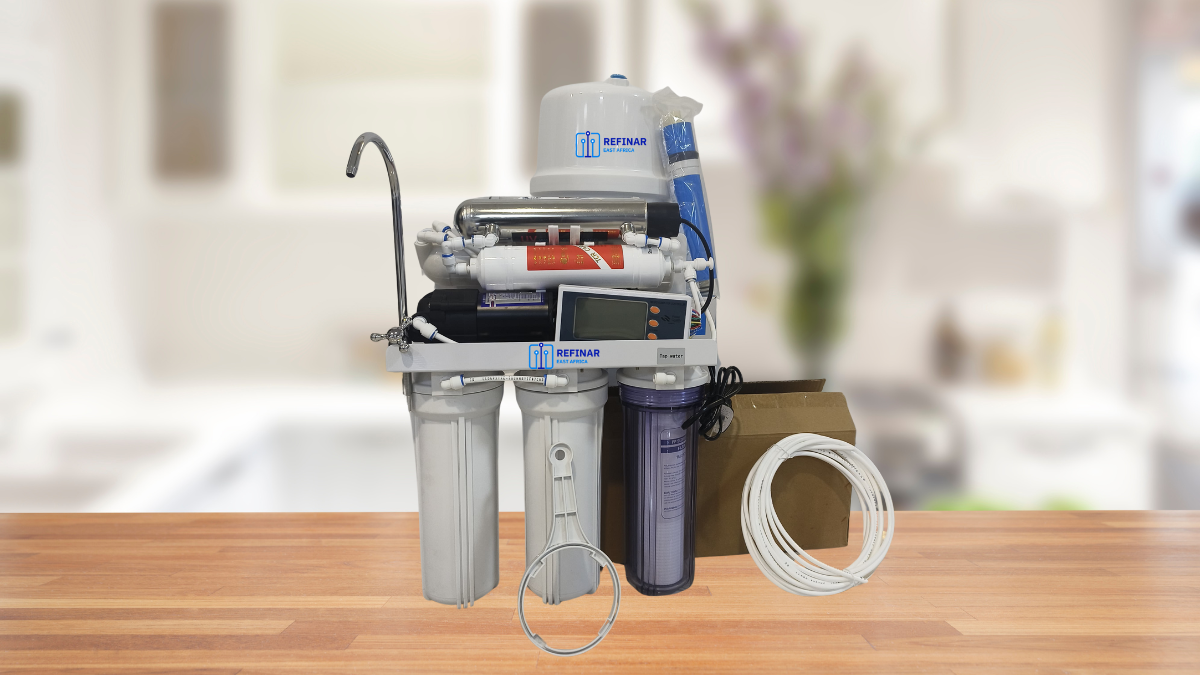Whether you use municipal water or a well, undersink water purifiers work flawlessly with your water supply. They are equipped with advanced filters that target certain impurities, giving them a versatile option for any family. Our purifiers have a lifespan of 5 to 10 years, making them long-term partners in your search for pure water. Here are the 10 most frequently asked questions and answers concerning our Undersink Water Purifiers.
1. How does an undersink water purifier work?
Our Undersink water purifiers utilize various filtration technologies such as reverse osmosis, carbon filtration, or UV sterilization. These systems are installed directly under the sink and treat water before it reaches the tap, ensuring clean and safe drinking water.
2. What contaminants do undersink water purifiers remove?
Undersink water purifiers may successfully remove a variety of impurities, including chlorine, lead, bacteria, viruses, pesticides, and heavy metals. They are intended to offer high-quality drinking water by removing hazardous contaminants.
3. Are undersink water purifiers easy to install?
This is one of the best things about our undersink water purifiers. We provide user-friendly installation instructions, making them relatively easy to install for those with basic plumbing skills. However, We provide our clients with installation and maintenance services whether complex systems or specialized configurations that may require professional installation.
4. How often do I need to replace the filters in an undersink water system?
Filter replacement intervals vary according to the type of purifier and its usage. However, our System Filters should be replaced every 6 to 12 months to guarantee optimal performance and continuous flow of clean water free from contaminants.
5. Do undersink water purifiers affect water pressure?
Our High-quality undersink water systems are designed to maintain good water pressure at the tap. However, some systems, particularly those using reverse osmosis, may have a slight impact on water flow rate, but it’s usually minimal and not noticeable in daily use.
6. Can undersink water purifiers remove minerals from water?
While some purification methods like reverse osmosis can remove minerals from water, our undersink purifiers include mineralization stages to add beneficial minerals back into the purified water, ensuring a balanced mineral content.
7. Do undersink water purifiers waste water?
Reverse osmosis undersink water systems may produce wastewater during the filtration process, but modern systems are designed to be water-efficient, with some models incorporating water-saving features to minimize wastage.
8. Are undersink water purifiers suitable for well water?
Our Undersink water system is highly effective for treating well water, We have equipped them with appropriate filters to address specific contaminants commonly found in well water such as bacteria, sediment, and dissolved minerals.
9. What is the lifespan of an undersink water purifier?
The lifespan of our undersink water system depends on the quality of the system, usage, and maintenance. Our undersink water purifiers have a lifespan of 5 to 10 years with regular filter replacements and proper care.
10. Do undersink water purifiers improve the taste and odor of water?
Yes, Our undersink water systems not only remove contaminants but also improve the taste, odor, and overall quality of drinking water, providing a refreshing and enjoyable drinking experience.


